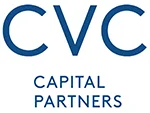 With the short amount of time between an IPO filing becoming public and the completion of the stock sale, the transition from private company to public can feel like a whirlwind.
With the short amount of time between an IPO filing becoming public and the completion of the stock sale, the transition from private company to public can feel like a whirlwind.
In a matter of weeks, companies move from relative obscurity to being scrutinized by stakeholders, investors, analysts, regulators and the financial media. Under this transformation, the rules of communicating should change as well.
The process of going public doesn’t begin with filing official documentation (the SEC Form S-1), nor should communications shift occur on the actual listing day. An IPO is a once-in-a-lifetime branding opportunity, and should be the culmination of a thoughtful and methodical strategic communications process that readies the company for the public stage.
In some ways, the 2012 Jumpstart Our Business Startups Act lulled pre-IPO companies into communications complacency. Under the JOBS act, private businesses that fall into the “emerging growth companies” category (which included 85% of new issues in 2014, according to a Latham & Watkins study) are able to file its S-1 confidentially.
|
|
From a communications perspective, this mean the general public — apart from rumor and speculation — has no knowledge of the EGC’s IPO plans until the finalized registration statement is publicly filed. In most cases, this is about one month before a company completes the IPO and goes public.
Here’s where many companies make a mistake: they don’t begin thinking about IPO communications until right before their filing is set to become public. At this point, the company is already deep into an SEC-mandated quiet period, which severely restricts their ability to communicate.
While it’s widely viewed as permissible to conduct media interviews on listing day, it’s far from the ideal time to begin telling your story. How can you expect the media to get your story right, if listing day is the first time they’ve ever heard of the company?
Private companies on the public path face a host of communications challenges: some have no media presence, others are loved by the consumer media but are ignored or misunderstood by the financial press, and others are overhyped.
Regardless of their situation, companies benefit from managing the messages around their IPO and growth story as often and as early as they can. And in order to get the story to unfold the way they want it, companies should seed the key elements of their story with the media well ahead of publicly announcing IPO intentions.
So, when should companies begin strategically communicating around their IPO? For companies that need to build brand awareness or correct misperceptions in the business and financial media, the more time they build into their planning, the better.
Launching a corporate rebranding, or announcing new strategic plans weeks before the start of a quiet period isn’t going to be nearly as effective as a program that begins six months or a year in advance.
IPO communications should begin taking shape at the onset of the IPO consideration process. That doesn’t mean the company should broadcast that it’s preparing to go public — not only would that be premature, it could potentially scare off investors, lead to unnecessary speculation and derail the entire process.
But if it is a sponsor-backed company or one that contemplates a future liquidity event (IPO or sale), then it’s never too early to start setting the stage. Companies should focus on ensuring a clear understanding of their business model, growth strategy and key points of differentiation. Every media opportunity should be seen as an opportunity to educate the media on the company’s value proposition and competitive advantages, the broader market opportunity and dynamic industry trends.
The idea is to build momentum going into listing day, and present the IPO as a logical next step in a gradually building story. Not only do companies need to actively cultivate that story line, they need to make sure they’re telling it to the right people. Private companies that have been hyped prior to their IPO may not struggle to find ears, but not every reporter will deliver the story like they tell it. On the flipside, companies flying under the radar may not get the attention they deserve or wind up talking to a reporter unfamiliar with their business.
Relationship building is hugely important for both under-hyped companies and companies in the spotlight. There’s no room on listing day for surprises. Companies should be picky with their listing day interviews and take meetings with reporters who will be most receptive and share it with the most relevant audience. Listing day shouldn’t be a first conversation but a continuation of an ongoing dialogue. And reporters who have preexisting relationships with executives are much more likely to be invested in the outcome of the IPO and pen thoughtful stories.
In order to have those relationships in place by the time listing day comes around, companies need to carve out time for raising their profile and meeting with media before they’re confined by quiet period restrictions.
Listing day isn’t the be-all and end-all for IPO communications. There aren’t just investors and the media to think about, but employees, vendors, partners and customers. Going public has implications for every company stakeholder, and just as much time needs to be spent on communicating with these internal audiences and assuring them business will continue as usual. Management needs to walk a fine line between rallying the company behind the IPO and preserving confidentiality. Quiet period restrictions apply to every employee, from CEO to intern, and a violation of these rules can have serious repercussions.
While many CEOs want to be transparent, practically speaking, informing employees of IPO plans in advance of the public filing of the S-1 is risky. Instead, management should put together a task force to stay involved throughout the IPO process and oversee internal and client communications. This entails developing strict communications guidelines and social media policies for when the S-1 does become public, as well as educational materials on the implications of the IPO for each relevant stakeholder.
A successful IPO is typically the result of years of hard work and careful planning. Instead of throwing together a communications plan,
IPO communications should be approached in the same strategic and thoughtful manner. Most companies get only one opportunity to walk down the IPO aisle and it will serve them well to ensure they look their best before they step up to the altar.
Michael Fox is managing partner at ICR and co-head its crisis and transaction group.



 Edelman handles Viking Holdings, the river and ocean luxury cruise line that plans to raise $1B via an IPO priced in the $21 to $25 per share range.
Edelman handles Viking Holdings, the river and ocean luxury cruise line that plans to raise $1B via an IPO priced in the $21 to $25 per share range. Teneo is handling the initial public offering of CVC Capital Partners, one of Europe’s largest private equity firms with nearly $200B in assets under management.
Teneo is handling the initial public offering of CVC Capital Partners, one of Europe’s largest private equity firms with nearly $200B in assets under management. Brunswick Group represents Endeavor Group Holdings as it agrees to go private via its acquisition by Silver Lake technology investment firm, which is handled by Edelman Smithfield.
Brunswick Group represents Endeavor Group Holdings as it agrees to go private via its acquisition by Silver Lake technology investment firm, which is handled by Edelman Smithfield. Tod Donhauser, a nine-year veteran of Edelman, has joined H/Advisors Abernathy as managing director and head of its San Francisco office.
Tod Donhauser, a nine-year veteran of Edelman, has joined H/Advisors Abernathy as managing director and head of its San Francisco office. Intelligent Group Ltd, a Hong Kong-based financial PR firm, has priced its initial public offering of 1.9M shares at $4, which is the low end of the $4 to $5 range.
Intelligent Group Ltd, a Hong Kong-based financial PR firm, has priced its initial public offering of 1.9M shares at $4, which is the low end of the $4 to $5 range.


 Have a comment? Send it to
Have a comment? Send it to 
No comments have been submitted for this story yet.